 W
WThe North African campaign of the Second World War took place in North Africa from 10 June 1940 to 13 May 1943. It included campaigns fought in the Libyan and Egyptian deserts and in Morocco and Algeria, as well as Tunisia.
 W
WThe Battle of Alam el Halfa took place between 30 August and 5 September 1942 south of El Alamein during the Western Desert Campaign of the Second World War. Panzerarmee Afrika, attempted an envelopment of the British Eighth Army. In Unternehmen Brandung, the last big Axis offensive of the Western Desert Campaign, Rommel intended to defeat the Eighth Army before Allied reinforcements arrived.
 W
WAn Army at Dawn: The War in North Africa, 1942–1943 is a Pulitzer Prize–winning book written in 2002 by long-time Washington Post correspondent Rick Atkinson. The book is a history of the North African Campaign, particularly focused on the role of the United States military. The book follows the early planning stages of the Allied invasion of North Africa, the landings in Casablanca, Oran, and Algiers, and finally the back and forth struggle for dominance in Tunisia. Atkinson constructs his narrative from letters, newspaper articles, and personal diaries of commanders, soldiers, and others on the ground in northern Africa. The book discusses the battlefield failings and successes of American troops and their commanders and the larger context of the burgeoning cooperation between the Allied forces in World War II.
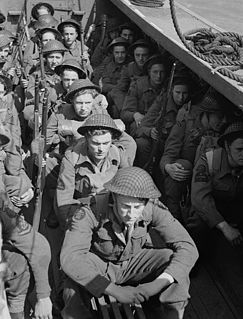 W
WThe Raid on Bardia was an amphibious landing at the coastal town of Bardia in North Africa by British Commandos over the night of 19/20 April 1941 during the Second World War. The raid was carried out by No. 7 Commando also known as A Battalion Layforce together with a small detachment from the Royal Tank Regiment supported by five navy ships and a submarine. The raid—which destroyed an Italian artillery battery and a supply dump—was deemed a success despite the loss of 71 men. The more lasting strategic effect of the raid was the diversion of a German armoured brigade from the front line to provide rear area security.
 W
WThis is the order of battle for the Battle of Alam el Halfa, a World War II battle between the British Commonwealth and the European Axis Powers Germany and Italy in North Africa between 30 August and 5 September 1942.
 W
WThe Battle of Point 175 was a military engagement of the Western Desert Campaign that took place during Operation Crusader from 29 November – 1 December 1941, during the Second World War. Point 175 is a small rise just south of the Trigh Capuzzo, a desert track east of Sidi Rezegh and south of Zaafran, with a good view of the vicinity. In early November 1941, the feature was held by German infantry of Division z.b.V. Afrika. Troops of the 2nd New Zealand Division and Infantry tanks of the 1st Army Tank Brigade attacked and captured Point 175 on 23 November, during the Battle of Sidi Rezegh, at the start of Operation Crusader. The New Zealand troops then attacked westwards and made contact with the Tobruk garrison, which had broken out to meet them. From 29 November – 1 December, the New Zealanders defended the point and the area to the west against Axis attempts to sever the link with the Tobruk garrison and regain control of the local roads. The new 132nd Armoured Division Ariete re-captured Point 175 late on 29 November.
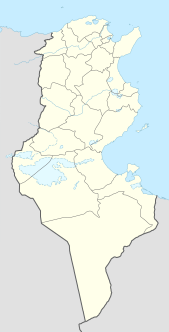 W
WSedjenane is a town in northern Tunisia, on the railway line to Mateur and the port of Bizerta. The Battle of Sedjenane was fought during World War II between the Allies and Axis for control of a town in northern Tunisia, on the railway line to Mateur and the port of Bizerta. The battle was part of the Tunisia Campaign.
 W
WBig Fence was a secret navigational aid for US Army Air Force sorties from North Africa and Italy during World War II, ultimately located at the Castel del Monte in Apulia. It was operated by the 6649th Navigational Aids Squadron of the 341st Signal Company, XV Fighter Command, 15th Army Air Force.
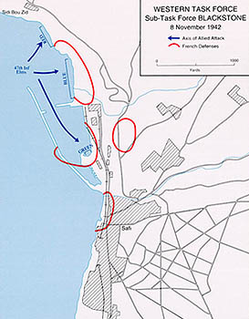 W
WOperation Blackstone was a part of Operation Torch, the Allied landings in North Africa during World War II. The operation called for American amphibious troops to land at and capture the French-held port of Safi in French Morocco. The landings were carried out by the 47th Infantry Regiment of the U.S. Army and took place on the morning of 8 November 1942 as part of a larger operation to capture Casablanca.
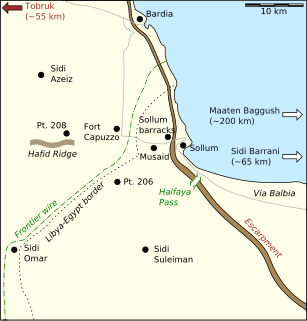 W
WOperation Brevity was a limited offensive conducted in mid-May 1941, during the Western Desert Campaign of the Second World War. Conceived by the commander-in-chief of the British Middle East Command, General Archibald Wavell, Brevity was intended to be a rapid blow against weak Axis front-line forces in the Sollum–Capuzzo–Bardia area of the border between Egypt and Libya. Although the operation got off to a promising start, throwing the Axis high command into confusion, most of its early gains were lost to local counter-attacks, and with German reinforcements being rushed to the front the operation was called off after one day.
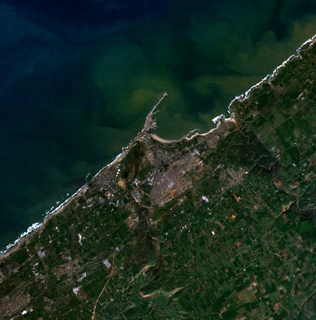 W
WOperation Brushwood was a part of Operation Torch, Allied landings in Africa during World War II.
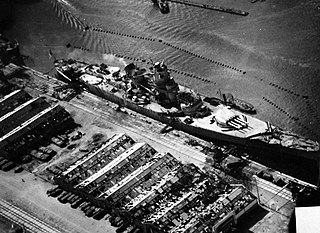 W
WThe Naval Battle of Casablanca was a series of naval engagements fought between American ships covering the invasion of North Africa and Vichy French ships defending the neutrality of French Morocco in accordance with the Second Armistice at Compiègne during World War II. The last stages of the battle consisted of operations by German U-boats which had reached the area the same day the French troops surrendered.
 W
WOperation Crusader was a military operation of the Western Desert Campaign during World War II by the British Eighth Army against the Axis forces in North Africa commanded by Generalleutnant Erwin Rommel. The operation was intended to bypass Axis defences on the Egyptian–Libyan frontier, to defeat the Axis armoured forces and to relieve the 1941 Siege of Tobruk.
 W
WOperation Flipper was a British commando raid during the Second World War, mainly by men from No. 11 (Scottish) Commando. The operation included an attack on the headquarters of Erwin Rommel, the commander of Panzergruppe Afrika in North Africa. It was timed for the night of 17/18 November 1941, just before the start of Operation Crusader. The operation failed as Rommel had left the target house weeks earlier and all but two of the commandos who landed were killed or captured. One member of the Special Boat Section team, who had secured the beach for the commando party, also escaped.
 W
WThe Géo Gras Group was a French resistance movement that played a decisive role during Operation Torch, the British-American invasion of French North Africa during WWII.
 W
WHamish Scott Henderson was a Scottish poet, songwriter, communist, intellectual and soldier.
 W
WThe Italian invasion of Egypt was an offensive in the Second World War, against British, Commonwealth and Free French forces in the Kingdom of Egypt. The invasion by the Italian 10th Army ended border skirmishing on the frontier and began the Western Desert Campaign (1940–1943) proper. The Italian strategy was to advance from Libya along the Egyptian coast to seize the Suez Canal. After numerous delays, the scope of the offensive was reduced to an advance as far as Sidi Barrani and the engagement of any British forces in the area.
 W
WThe Long Range Desert Group (LRDG) was a reconnaissance and raiding unit of the British Army during the Second World War.
 W
WMiddle East Command, later Middle East Land Forces, was a British Army Command established prior to the Second World War in Egypt. Its primary role was to command British land forces and co-ordinate with the relevant naval and air commands to defend British interests in the Middle East and eastern Mediterranean region.
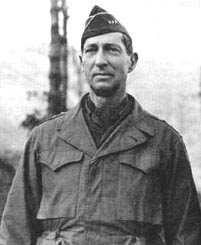 W
WOperation Flagpole was part of the run-up to Operation Torch, the planned Allied invasion of North Africa during World War II. It involved arranging for and carrying out a top-secret high-level meeting between U.S. General Mark W. Clark, representing the Allies, and Général Charles E. Mast, the leader of a group of pro-Allied Vichy France officers in French North Africa, to secure their cooperation with the invasion.
 W
WOperation Orient was the code name given to the operation that envisioned Nazi Germany linking up with the Empire of Japan mainly through the Middle East. Not to be confused with the North African Campaign, which highlighted in Führer-Directive Nr. 32 gave large priority to the capture of Tobruk and ultimately securing North Africa, Operation Orient focused mainly on securing the Middle East and its oil fields and linking up with Japanese forces after the fall of the Soviet Union.
 W
WThe Battle of Port Lyautey began on 8 November 1942 for the city of Port Lyautey, today known as Kenitra, in French Morocco. The battle ended with its capture and occupation by American troops, overrunning French forces after more than two days of fierce fighting.
 W
WThe Raid on Sidi Haneish Airfield was a military operation carried out the night of 26 July 1942. A British Special Air Service unit commanded by Major David Stirling attacked a German-held airfield in Egypt during the Western Desert Campaign of Second World War. Several Luftwaffe aircraft used to ferry supplies to the Axis forces were destroyed or damaged with machine-gun fire and explosives. Axis front line units were diverted to reinforce the garrisons in the rear vulnerable to attack.
 W
WOperation Skorpion from 26 to 27 May 1941, was a military operation during the Western Desert Campaign of the Second World War. The operation was conducted by Axis forces under the command of Colonel Maximilian von Herff and British forces under Lieutenant-General William "Strafer" Gott. A counter-attack was made on British positions at Halfaya Pass in north-western Egypt, which had been captured during Operation Brevity (15–16 May). Unternehmen Skorpion was the second offensive operation commanded by Rommel in Africa.
 W
WOperation Torch was an Allied invasion of French North Africa during the Second World War. The French colonies in the area were dominated by the French, formally aligned with Germany but of mixed loyalties. Reports indicated that they might support the Allies. American General Dwight D. Eisenhower, supreme commander of the Allied forces in the European Theater, planned a three-pronged attack on Casablanca (Western), Oran (Center) and Algiers (Eastern), then a rapid move on Tunis.
 W
WThe Tunisian campaign was a series of battles that took place in Tunisia during the North African campaign of the Second World War, between Axis and Allied forces. The Allies consisted of British Imperial Forces, including a Greek contingent, with American and French corps. The battle opened with initial success by the German and Italian forces but the massive supply interdiction efforts led to the decisive defeat of the Axis. Over 250,000 German and Italian troops were taken as prisoners of war, including most of the Afrika Korps.
 W
WThe Western Desert campaign, took place in the deserts of Egypt and Libya and was the main theatre in the North African campaign of the Second World War. Military operations began in June 1940 with the Italian declaration of war and the Italian invasion of Egypt from Libya in September. Operation Compass, a British five-day raid in December 1940, led to the destruction of the Italian 10th Army. Benito Mussolini sought help from Adolf Hitler, who sent a small German force to Tripoli under Directive 22. The Afrika Korps was formally under Italian command as Italy was the main Axis power in the Mediterranean and North Africa.
 W
WEric Lloyd Williams (1915–1988) was a South African-born journalist and war correspondent who covered World War II for the South African Press Association and Reuters.
 W
W